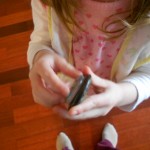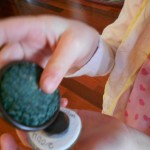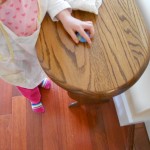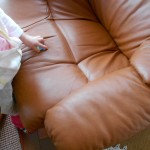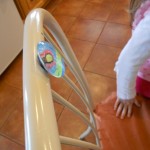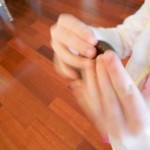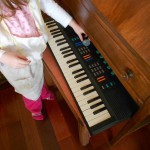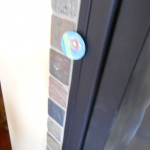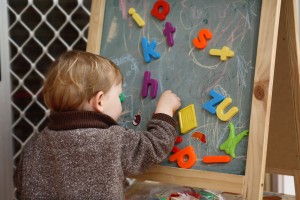Parents do not need to be rocket scientists to involve kids in science play and learning. Kids can have some exciting science fun with magnets.
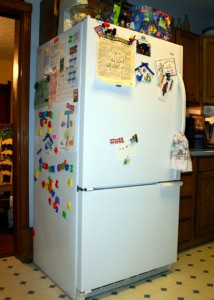 The most common magnets used to be fridge magnets, but with stainless steel appliances, kitchens haven ‘t got as many as they used to. Door latches on cabinets often have magnets and some toys. For some magnets to play with, toy stores have ones that follow safety standards for kids. Each year, some children are injured and treated for swallowing magnets so make sure any magnets are a safe size. Metal cookie sheets or large baking pans can substitute for fridge doors.
The most common magnets used to be fridge magnets, but with stainless steel appliances, kitchens haven ‘t got as many as they used to. Door latches on cabinets often have magnets and some toys. For some magnets to play with, toy stores have ones that follow safety standards for kids. Each year, some children are injured and treated for swallowing magnets so make sure any magnets are a safe size. Metal cookie sheets or large baking pans can substitute for fridge doors.
One of the first things that kids like to do with magnets, is to find out what magnets will stick to. Here is an excerpt from Big Sister’s explorations last year:
A metal foot that popped out from underneath an easy chair was too intriguing to be ignored. Especially, when it turned out to be the same size and shape as a fridge magnet. Lo and behold, it stuck to the magnet, at least on the metal side. What else would it stick to? Little hands tried tables, chairs, the floor, a spoon, the dishwasher and even the rocks and trim of the fireplace. To extend, the activity, I asked if other fridge magnets also stuck to those things. And off went the eager, but young, scientist.
A few months ago, we tried what would happen to magnets that were frozen in ice. No need to guess what was the inspiration for that. (How many times do you hear Let It Go?)
As Big Sister (6) and Little Sister (3) explored a bunch of little bits from the junk drawer, they quickly discovered that the magnets near the edge of the ice still worked. To make sure that any one item was attracted to the magnet, there was one magnet that wasn’t frozen in ice. We could check if the magnet would pick up the nails, screws, plastic spiders, and other assorted pieces.
There are many other ideas for activities with magnets, such as trying to pull train cars with magnets using pipe cleaners, invisibly moving magnetic items on top of a thin piece of cardboard by moving a magnet underneath, putting pipe cleaners or bobby pins inside a plastic bottle and using a magnet outside to move them up and down, and more. Children’s easels often have a magnetic side so kids can play with letters and other magnets.
Kids will create their own experiments as they engage in science fun with magnets. Has your child played with magnets?

